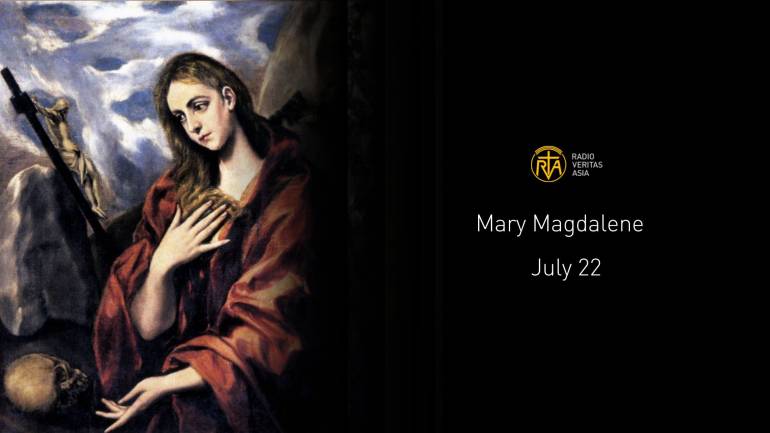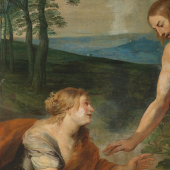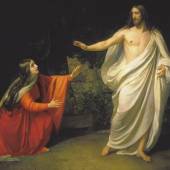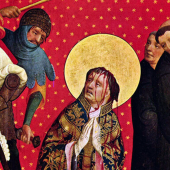Why Does Mary Magdalene Hold a Skull in Her Hand?

As one of the most prominent female figures in the Bible, Saint Mary Magdalene has inspired countless works of art. Most paintings portray her in penitent reflection recalling how Jesus cleansed her of seven demons or adoring the resurrected Christ, signifying her encounter with the Lord on Easter Sunday.
But one particular iconography associated with Mary Magdalene shows her holding or contemplating a skull. For instance, a 17th-century painting by French artist Georges de La Tour depicts the saint with a skull on her lap, gazing at a burning candle in a dimly lit room. Why is she represented in such an eerie way?
Though it may seem grim at first glance, saints depicted with skulls are not uncommon in Christian iconography. The skull serves as a powerful reminder of memento mori a Latin phrase meaning "remember death." Far from being morbid, this symbol encourages the saints to live each day with their souls prepared to meet God. It reflects a deep awareness of the fleeting nature of earthly life and a longing to dedicate every moment to the divine.
In Christian art, several saints are traditionally shown holding or meditating on a skull, each with slightly different meanings in their contexts. Saint Jerome, the Bible translator and desert hermit, holds a skull to signify his scholarly meditation on mortality. Saint Francis of Assisi embraced it as a sign of humility and his reverence for death as part of God’s creation. Saint Rosalia, who lived in seclusion in a cave, is shown with a skull to reflect her detachment from worldly distractions.
Saint Ignatius of Loyola, founder of the Jesuits, is occasionally portrayed with a skull during retreats, symbolizing spiritual discernment and life’s impermanence. Saint Francis Borgia, after witnessing the decomposed corpse of a queen, turned from nobility to religious life the skull marking that profound conversion. Saint Bruno, founder of the Carthusians, used the skull to represent a silent, contemplative monastic life. Saint Paul the Hermit, one of the earliest desert fathers, is similarly shown with a skull to highlight his asceticism and lifelong meditation on death.
The image of Saint Mary Magdalene with a skull specifically represents her deep repentance and contemplative solitude. After Jesus freed her from the demons that tormented her soul, she became one of His most devoted followers. Her unwavering commitment led her to stand at the foot of the Cross alongside the Blessed Virgin Mary and Saint John, witnessing Christ’s passion, death, and burial.
She also had the great honor of being the first to encounter the Risen Christ and announce the resurrection to the apostles, earning her the title “Apostle of the Apostles.”
But the association with the skull continues beyond her iconography. In her basilica in southern France, a reliquary believed to contain Mary Magdalene’s skull is venerated. Tradition holds that she was buried there by her friend, Saint Maximinus, the first bishop of Aix. Interestingly, when her relics were first exhumed during the Saracen invasions of 710 A.D., her skull was found without its jawbone, which had already been taken to Rome. Pope Boniface VIII returned the jawbone to her basilica on April 6, 1295, thus completing the relic displayed to this day.
Saint Mary Magdalene remains a powerful figure in the Catholic Church a model of radical conversion, faithful discipleship, and courageous proclamation of the Gospel. Recognizing her significance, the late Pope Francis elevated her July 22 memorial to the rank of a feast, calling her “an apostle of hope for the world.”
“Mary: the revolution of her life—the revolution destined to transform the existence of every man and woman begins with a name that echoes in the garden of the empty tomb,” the late pope said during a weekly audience in May 2017.
In today’s disconnected and disoriented world, we can all draw strength from the witness of Saint Mary Magdalene, whoteaches us that fervent discipleship and total conversion remain the true path to hope and renewal.
Radio Veritas Asia (RVA), a media platform of the Catholic Church, aims to share Christ. RVA started in 1969 as a continental Catholic radio station to serve Asian countries in their respective local language, thus earning the tag “the Voice of Asian Christianity.” Responding to the emerging context, RVA embraced media platforms to connect with the global Asian audience via its 21 language websites and various social media platforms.














